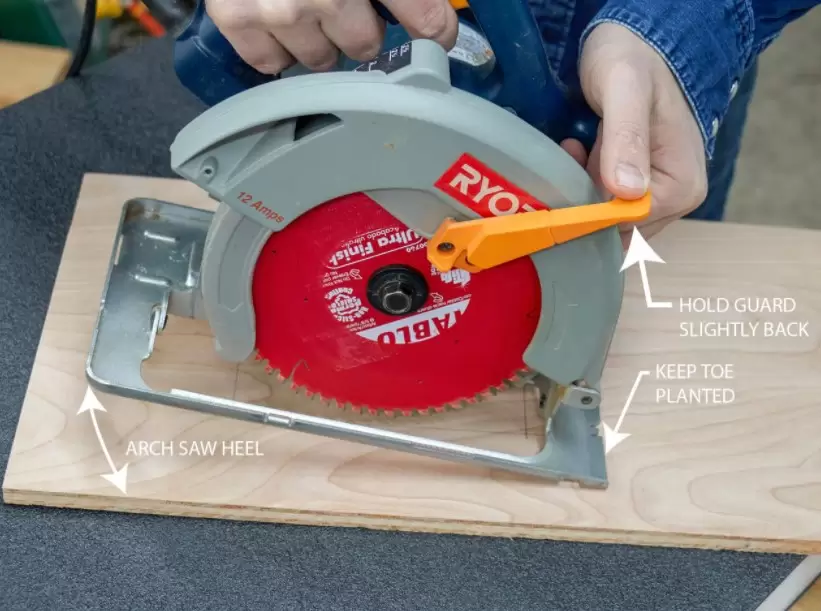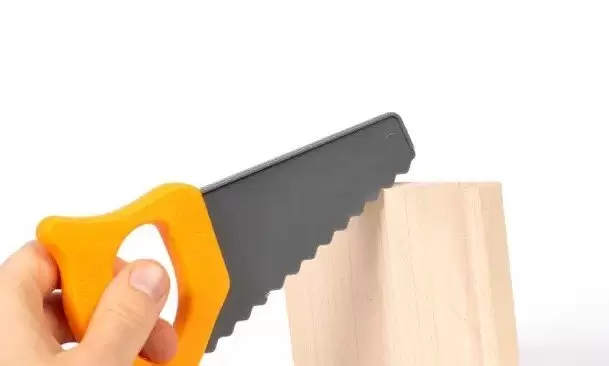Hand saws, otherwise called ‘frame saws,’ are used in carpentry to cut bits of wood into different shapes. This is usually done to combine the pieces and missed a wooden article. A question can pop up in our mind that “How to cut wood straight with a hand saw?” The determination comes from a scope of substantial name marks just as various types and sizes suit all positions. A couple incorporates resharpenable cutting edges so they can be utilized consistently.
The teeth per inch have perhaps the most significant impact on its cutting capacity. More significant teeth and lower TPI are regularly for gentler materials, and more modest teeth are reasonable for cutting more rigid materials. If you are searching for a smooth completion, utilize a better sharp edge.
How to Cut Wood Straight with A Hand Saw?
If you’re really an expert or an inexperienced woodcutter. Although one could believe that in this method, one form of hand saw rules over the others, the reality is that you must select your hand saw depending on the direction of your planned cutting. Some method of cutting woods straight with a hand saw is given below:
Imprint The Cutline:
Remember the immortal guideline of carpentry: estimate twice, cut once. Measure where you need a cut (twice obviously) and draw a line checking where you need the slice. The line will go about as a manual for assisting you with getting a straight cut.
Make The Beginning Cut:
When you make the previously cut, utilize your thumb or the joint of your thumb on the hand carrying the wood as a manual for guaranteeing you cut along the cutline. In case you’re utilizing a crosscut saw, start your cut with the teeth closest to the handle. It might recommend the best leverage. Make a few slices of back before you get a good kerf (opening in the wood).
Start your cut with the better teeth farthest from the handle if you are using a ripsaw (close to the point of the edge). Try not to start cutting with a pencil right on the line you have stamped before. On the waste hand, slice directly close to the bar. The section of the wood that you are not going to use in the completed project is the waste hand. It’s easier to have some wood, which is a bit longer than short. Generally, down to the pencil line, you may polish the wood.
Hold Your Elbows Near Your Body:
To neutralize the characteristic propensity to point the sharp edge away from the opposite, hold your elbows near your body while sawing. This will likewise help keep you from contorting and shifting the edge, accordingly guaranteeing a decent, clean-cut.
The Most Effective Method To Hold The Saw:
Grasp the handle with the goal that your index finger reaches out at the edge of the handle. This allows you to “target” the saw along the path and ensures more accurate cuts. Clutch the hold immovably, however not very firmly.
The Stroke:
Just after anxiety has started, the cut will develop a few fast forward strokes so that you can transfer your left hand away from the edge. With a quick, free-running movement, drive the saw. Utilize long strokes with the goal that every tooth does a decent amount of the work. Short strokes dull the saw quicker because a couple of the teeth accomplish the job.
Veering Correction:
From the cut line, also the best carpenters veer. If you do this, you stop the normal inclination to twist and bend the blade of the saw so that it gets back on track. Only an irregular and rough cut will result in this. Stop sawing instead and move your blade back to the stage where you have veered off. Start sewing on the line again.
Curtail Authority With A Nail:
Another problem you can encounter, especially when you cut with a tear saw along the grain, is authoritative. When the kerf covers the saw, restraining occurs. Spot a nail in the kerf to forestall this. Which leaves it open. As you have seen, move the pin toward you.
What Is the Best Hand Saw for Cutting Saw?
Your arrangements for cutting straight cuts through wood should start by picking out the best form of hand saw only for work. It is not that easy to say which one is the best. But through discussion and research, it is found that there is a best one.
- A panel saw is called the traditional handsaw. Which features a slightly twisted stick that can be up to 26 inches long with a large blade. To cut into wide pieces of wood or 2x4s, people like to use panel saws.
- Hacksaws have a blade of 10 to 12 inches assisted by a c-shaped structure that created conflict on the blade. Hacksaws have sharp blades which are intended to cut through plastic and metal effortlessly.
- A jab saw is a large, thin saw with strong jaws used in concrete structures such as wallboard to cut holes. So no need to create a hole, the blade features a pointy end that can be forced through the material. Most designs might seem more like a butchers knife for chicken than a typical saw.
- Woodworking saws, including pulled saws, feature fine-teeth blades that allow thin, accurate cuts.
Summary
From such an article, we learn that in carpentry, hand saws, otherwise called frame saws, are used to cut bits of wood into various shapes. Quantify periodically where you need a cut and draw a checking line where the slice is needed. In just about any case, a piece of wood that’s a bit long rather than a bit short is better to have.
After getting your carbide blade going, you need to aim your saw precisely to get the best cut. Between the saw and the wood for crosscut saws, the optimal point is 45 degrees. You may also get the answer to the question most often asked which is “How to cut wood straight with a hand saw?”




